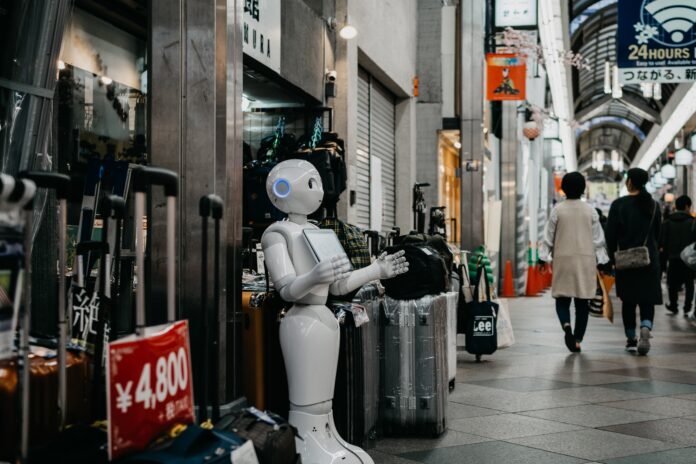In today’s world, computers and robots are ubiquitous. They have revolutionized the way we live, work and interact with each other. However, despite their widespread use, many people still find it challenging to differentiate between these two technological marvels. This article will explore the difference between computers and robots, highlighting their unique features, capabilities, and limitations.
Definition of Computers
A computer is an electronic device that processes data and performs various operations based on pre-defined instructions. It consists of a central processing unit (CPU), memory, input/output devices, and software. The primary function of a computer is to process and manipulate information in a quick and efficient manner.
Definition of Robots
A robot is a machine that is designed to perform a range of tasks automatically or semi-autonomously. It consists of mechanical components, sensors, actuators, and a control system. Robots can be programmed to perform various operations such as movement, sensing, manipulation, and decision making.
Also read: Robotics and Sustainable Glass Production: Innovations and Opportunities
Key Differences Between Computers and Robots
Purpose
The primary purpose of a computer is to process data and perform calculations. Computers are mainly used for data entry, storage, retrieval, and processing. They are also used for communication, entertainment, and education. On the other hand, the primary purpose of a robot is to perform physical tasks autonomously. Robots can be used for manufacturing, assembly, transportation, exploration, and many other tasks that require physical interaction with the environment.
Also read: Robotics and Sustainable Metal Production: Innovations and Trends
Intelligence
Computers are capable of processing vast amounts of data and performing complex calculations at lightning speed. They can also execute pre-defined instructions with great accuracy. However, they lack the ability to think, reason, and make decisions independently. In contrast, robots are becoming increasingly intelligent and can now perform tasks that were once thought to be the exclusive domain of humans. With the advancements in machine learning and artificial intelligence, robots are becoming more adaptive and can learn from their interactions with the environment.
Also read: Robotics in Precision Shrimp Farming: Innovations and Opportunities
Mobility
Computers are stationary devices that are typically used in offices, homes, and other stationary locations. They can be transported, but they are not designed for mobility. Robots, on the other hand, are designed for mobility and can move around autonomously. They can be equipped with wheels, tracks, legs, or other means of locomotion to enable them to move around and interact with their environment.
Also read: Robotics and Sustainable Plastic Recycling: Innovations and Opportunities
Interactivity
Computers are primarily designed to interact with humans through input/output devices such as keyboards, mice, and screens. They can also interact with other computers and devices through networks and the internet. Robots, on the other hand, are designed to interact with the physical environment. They can sense their environment through sensors such as cameras, microphones, and touch sensors. They can also interact with humans through speech recognition and natural language processing.
Also read: Robotics and Sustainable Metal Production: Innovations and Trends
Autonomy
Computers are entirely dependent on human input and cannot function without it. They require pre-defined instructions to operate, and they cannot make decisions on their own. Robots, on the other hand, can operate autonomously, performing tasks without human input. They can make decisions based on their sensors and pre-programmed instructions.
Examples of Computers
Computers come in various forms and sizes, including desktop computers, laptops, tablets, and smartphones. They are used in homes, schools, businesses, and industries. Some examples of computer applications include word processing, spreadsheet analysis, database management, graphic design, and gaming.
Also read: Robotics and Sustainable Plastic Recycling: Innovations and Opportunities
Examples of Robots
Robots are used in many industries, including manufacturing, healthcare, agriculture, transportation, and exploration. Some examples of robots include robotic arms, drones, autonomous cars, surgical robots, and humanoid robots such as Boston Dynamics’ Atlas and Spot.
Advantages and Disadvantages of Computers
Computers have numerous advantages, including their ability to process data quickly and accurately, their versatility, and their ability to improve productivity and efficiency. However, they also have some disadvantages, such as their high cost, their dependence on electricity, their potential for cyber-attacks and data breaches, and their impact on the environment.
Advantages and Disadvantages of Robots
Robots have many advantages, including their ability to perform repetitive and dangerous tasks, their efficiency, and their ability to work in hazardous environments. They can also improve the quality of products and services and reduce labor costs. However, they also have some disadvantages, such as their high cost of development and maintenance, the potential for job displacement, ethical concerns surrounding the use of robots in certain industries, and the potential for malfunction or error.
Differences in Technology
Computers and robots utilize different technologies. Computers are built using electronic components such as processors, memory chips, and hard drives. They operate on binary code, which is a language consisting of only zeros and ones. Robots, on the other hand, use a combination of electronic components, sensors, and actuators. They are programmed using software that allows them to interact with the physical world.
Future of Computers and Robots
The future of computers and robots is exciting and full of possibilities. With the increasing advancements in artificial intelligence, machine learning, and robotics, we can expect to see more intelligent and autonomous robots in the future. The use of robots in industries such as healthcare, agriculture, and transportation is likely to increase, leading to increased efficiency and productivity. Similarly, computers will continue to play a significant role in our lives, facilitating communication, entertainment, and education.
Conclusion
In conclusion, while computers and robots share some similarities, they differ in their primary function, intelligence, mobility, interactivity, autonomy, and technology. Both technologies have advantages and disadvantages, and their future looks bright with continued advancements in technology. As we continue to develop more intelligent and capable robots, we can expect to see them playing a more significant role in various industries, making our lives easier and more efficient.
FAQs about Difference Between Computers and Robots
Here are some FAQa about Difference Between Computers and Robots.
Can a computer be considered a robot?
No, a computer is not a robot as it lacks physical mobility and the ability to interact with the environment.
Can robots replace humans in the workforce?
In some industries, robots can replace humans in performing repetitive and dangerous tasks, but they cannot replace human creativity and problem-solving skills.
What is the future of robotics?
The future of robotics is exciting, with more intelligent and autonomous robots being developed for various industries.
How can computers and robots improve our lives?
Computers and robots can improve our lives by increasing productivity and efficiency, performing dangerous and repetitive tasks, and improving the quality of products and services.
What are the ethical concerns surrounding the use of robots?
Some ethical concerns surrounding the use of robots include job displacement, safety concerns, and the potential for robots to be used in unethical ways.

